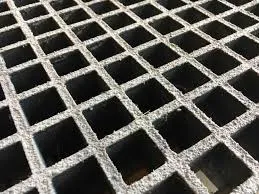
-
 Afrikaans
Afrikaans -
 Albanian
Albanian -
 Amharic
Amharic -
 Arabic
Arabic -
 Armenian
Armenian -
 Azerbaijani
Azerbaijani -
 Basque
Basque -
 Belarusian
Belarusian -
 Bengali
Bengali -
 Bosnian
Bosnian -
 Bulgarian
Bulgarian -
 Catalan
Catalan -
 Cebuano
Cebuano -
 China
China -
 China (Taiwan)
China (Taiwan) -
 Corsican
Corsican -
 Croatian
Croatian -
 Czech
Czech -
 Danish
Danish -
 Dutch
Dutch -
 English
English -
 Esperanto
Esperanto -
 Estonian
Estonian -
 Finnish
Finnish -
 French
French -
 Frisian
Frisian -
 Galician
Galician -
 Georgian
Georgian -
 German
German -
 Greek
Greek -
 Gujarati
Gujarati -
 Haitian Creole
Haitian Creole -
 hausa
hausa -
 hawaiian
hawaiian -
 Hebrew
Hebrew -
 Hindi
Hindi -
 Miao
Miao -
 Hungarian
Hungarian -
 Icelandic
Icelandic -
 igbo
igbo -
 Indonesian
Indonesian -
 irish
irish -
 Italian
Italian -
 Japanese
Japanese -
 Javanese
Javanese -
 Kannada
Kannada -
 kazakh
kazakh -
 Khmer
Khmer -
 Rwandese
Rwandese -
 Korean
Korean -
 Kurdish
Kurdish -
 Kyrgyz
Kyrgyz -
 Lao
Lao -
 Latin
Latin -
 Latvian
Latvian -
 Lithuanian
Lithuanian -
 Luxembourgish
Luxembourgish -
 Macedonian
Macedonian -
 Malgashi
Malgashi -
 Malay
Malay -
 Malayalam
Malayalam -
 Maltese
Maltese -
 Maori
Maori -
 Marathi
Marathi -
 Mongolian
Mongolian -
 Myanmar
Myanmar -
 Nepali
Nepali -
 Norwegian
Norwegian -
 Norwegian
Norwegian -
 Occitan
Occitan -
 Pashto
Pashto -
 Persian
Persian -
 Polish
Polish -
 Portuguese
Portuguese -
 Punjabi
Punjabi -
 Romanian
Romanian -
 Russian
Russian -
 Samoan
Samoan -
 Scottish Gaelic
Scottish Gaelic -
 Serbian
Serbian -
 Sesotho
Sesotho -
 Shona
Shona -
 Sindhi
Sindhi -
 Sinhala
Sinhala -
 Slovak
Slovak -
 Slovenian
Slovenian -
 Somali
Somali -
 Spanish
Spanish -
 Sundanese
Sundanese -
 Swahili
Swahili -
 Swedish
Swedish -
 Tagalog
Tagalog -
 Tajik
Tajik -
 Tamil
Tamil -
 Tatar
Tatar -
 Telugu
Telugu -
 Thai
Thai -
 Turkish
Turkish -
 Turkmen
Turkmen -
 Ukrainian
Ukrainian -
 Urdu
Urdu -
 Uighur
Uighur -
 Uzbek
Uzbek -
 Vietnamese
Vietnamese -
 Welsh
Welsh -
 Bantu
Bantu -
 Yiddish
Yiddish -
 Yoruba
Yoruba -
 Zulu
Zulu
Innovative Fiberglass Grid Solutions for Enhanced Structural Integrity and Durability
Understanding Fiberglass Grid A Comprehensive Overview
Fiberglass grids are becoming an increasingly popular choice in various construction and industrial applications due to their remarkable strength-to-weight ratio, corrosion resistance, and durability. These composite materials offer numerous advantages over traditional options such as steel and concrete, making them an ideal solution for a wide range of projects.
What is Fiberglass Grid?
Fiberglass grid is a type of composite material made from fiberglass reinforced with polymer resins. It is formed into a mesh or grid-like structure, which provides enhanced stability and strength. The grids are produced using different manufacturing processes, including pultrusion and hand lay-up, which allow for various thicknesses, sizes, and load capacities to meet specific project requirements.
Advantages of Fiberglass Grids
One of the primary benefits of fiberglass grids is their exceptional corrosion resistance. Unlike metal reinforcements that can rust over time, fiberglass grids can withstand exposure to harsh chemicals, acids, and moisture without deteriorating. This characteristic makes them particularly ideal for use in chemical processing plants, wastewater treatment facilities, and marine environments.
Additionally, fiberglass grids boast an impressive strength-to-weight ratio. They are significantly lighter than traditional materials, which not only makes them easier to transport and install but also reduces the overall load on the underlying structures. This attribute is especially beneficial in the realm of architecture and construction, where minimizing structural weight can lead to cost savings and increased design flexibility.
Furthermore, fiberglass grids offer excellent thermal and electrical insulation properties. They do not conduct electricity, making them a safe choice for projects involving electrical components. Additionally, their thermal insulation capabilities can help in energy conservation, contributing to more sustainable building practices.
fiberglass grid

Applications of Fiberglass Grids
The versatility of fiberglass grids enables their application across various industries. In construction, they are often used as reinforcement for concrete slabs, bridge decks, and highways, where they help improve load-bearing capacity and extend the lifespan of the structure. They are also commonly utilized in parking structures, walkways, and platforms, offering slip resistance and a safe walking surface.
In the chemical industry, fiberglass grids are used to create containment areas, secondary containment for tanks, and flooring in processing plants. Their resistance to corrosive materials ensures long-lasting performance in environments that would otherwise damage steel or wood alternatives.
Moreover, fiberglass grids are gaining traction in landscaping and civil engineering applications. They are utilized in soil stabilization, erosion control, and even in the construction of retaining walls. By providing support and stability to soil structures, fiberglass grids help prevent erosion and enhance the longevity of outdoor projects.
Environmental Considerations
As concerns about sustainability become increasingly prominent, fiberglass grids are also emerging as a more environmentally friendly alternative. Their long lifespan and resistance to degradation contribute to less waste and reduced need for replacements. Additionally, many fiberglass grid products are manufactured using recycled materials, promoting a circular economy and reducing their ecological footprint.
Conclusion
In summary, fiberglass grids represent a significant advancement in material science, offering a blend of strength, durability, and versatility. Their unique properties make them suitable for a wide array of applications in construction, industry, and beyond. As modern projects continue to evolve and demand more from construction materials, fiberglass grids are poised to play a crucial role in shaping a more resilient and sustainable future. Whether one is reinforcing a concrete structure or designing an innovative landscape, fiberglass grids will likely remain a top choice for builders and engineers alike.









